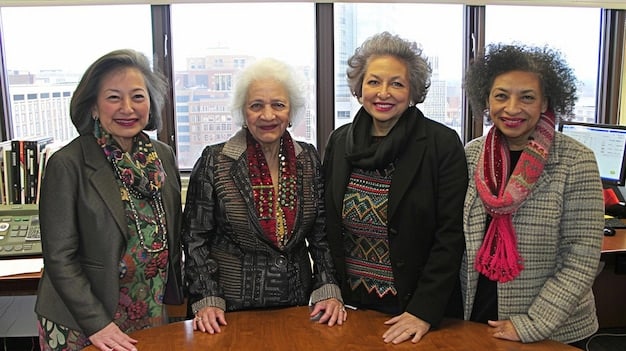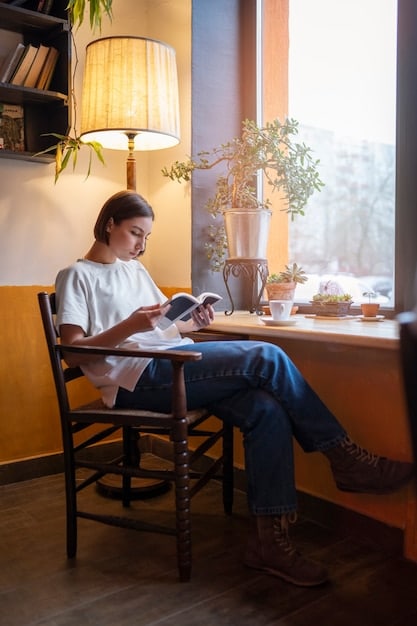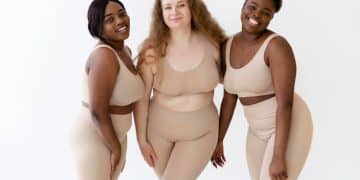Challenge Beauty Ideals: Reclaim Your Power & Confidence

Advertisements
Challenging beauty ideals involves understanding their origins, recognizing their impact on self-esteem, and actively choosing to redefine beauty on your own terms, fostering body positivity and self-confidence.
Advertisements
Are you tired of chasing after unrealistic beauty standards? It’s time to challenge beauty ideals and reclaim your power, building unshakable confidence from within.
Understanding the Origins of Beauty Ideals
Advertisements
Beauty ideals are not naturally occurring; they are constructed. Recognizing where these ideals come from is the first step in questioning their validity and impact on your life.
Historical Perspectives
Throughout history, beauty standards have varied widely. What was considered attractive in one era may be completely different in another.
For example, in some periods, a fuller figure was seen as a sign of wealth and fertility, while in others, a slender physique was more desirable. Understanding this historical context can help you see that beauty ideals are not fixed or universal.
Media Influence
The media plays a significant role in shaping our perceptions of beauty. From magazines and television to social media, we are constantly bombarded with images of what is presented as the ideal.
- Advertising: Advertisements often promote unrealistic images of beauty to sell products.
- Social Media: Influencers and celebrities can perpetuate narrow beauty standards through curated content.
- Magazines: Fashion and beauty magazines often feature heavily edited images that are unattainable for most people.
By being aware of the media’s influence, you can become more critical of the messages you consume and start to question the “perfect” images that are presented to you.

In conclusion, recognizing the historical and media-driven origins of beauty ideals helps you understand that these standards are not inherent or immutable. This awareness allows you to begin challenging their influence on your self-perception and self-worth.
The Impact of Unrealistic Beauty Standards
Unrealistic beauty standards can have a profound impact on mental and emotional well-being. Understanding these effects is crucial for taking steps to protect your self-esteem and confidence.
Mental Health Effects
Constantly striving to meet unattainable beauty standards can lead to a range of mental health issues.
Anxiety, depression, and body dysmorphia are just a few of the potential consequences. The pressure to conform can be overwhelming, leading to feelings of inadequacy and low self-worth.
Emotional Consequences
The emotional toll of chasing unrealistic beauty ideals can manifest in various ways.
- Low Self-Esteem: Feeling like you don’t measure up can significantly lower your self-esteem.
- Negative Body Image: Focusing on perceived flaws can lead to a distorted and negative body image.
- Comparison: Comparing yourself to others, especially on social media, can fuel feelings of envy and dissatisfaction.
Being mindful of these emotional consequences can empower you to challenge these standards and prioritize your mental and emotional health.
The detrimental effects of unrealistic beauty standards extend far beyond superficial concerns, impacting mental health and emotional well-being. Recognizing these consequences is a crucial step in protecting your self-esteem and fostering a healthier, more compassionate relationship with yourself.
Identifying Your Personal Triggers
Recognizing your personal triggers is key to protecting your mental and emotional health when it comes to beauty ideals. By identifying what provokes negative thoughts or feelings, you can develop strategies to cope and reclaim your power.
Social Media and Comparison
Social media can be a significant trigger for many people. Seeing carefully curated and often unrealistic images can lead to feelings of comparison and inadequacy.
Pay attention to the accounts you follow and the content you consume. If certain accounts consistently make you feel bad about yourself, consider unfollowing or muting them. Curating your feed to include more diverse and positive content can make a big difference.
Internalized Criticism
Sometimes the most significant triggers are internal. Internalized criticism refers to the negative self-talk and beliefs that you have absorbed over time.
- Self-Talk: Notice the language you use when you talk to yourself about your appearance.
- Beliefs: Identify any limiting beliefs you have about your worth and beauty.
- Past Experiences: Reflect on past experiences that may have shaped your negative self-perceptions.
Addressing these internal triggers requires self-compassion and a willingness to challenge your negative thought patterns.

Identifying your personal triggers, whether they are external sources like social media or internal factors such as self-criticism, is essential for protecting your mental and emotional well-being. Once you recognize these triggers, you can develop strategies to cope, challenge negative thoughts, and reclaim your sense of self-worth.
Redefining Beauty on Your Own Terms
Redefining beauty on your terms means breaking free from societal expectations and embracing a more inclusive and personalized view of attractiveness. This involves challenging conventional standards and celebrating your unique qualities.
Focus on Inner Qualities
True beauty shines from within. Shifting your focus to inner qualities can lead to a more fulfilling and authentic sense of self.
Kindness, intelligence, humor, and compassion are just a few of the traits that make someone truly beautiful. Cultivating these qualities can have a far greater impact on your overall well-being and attractiveness than physical appearance.
Embrace Individuality
Celebrating your unique qualities is a powerful way to redefine beauty for yourself. Instead of trying to fit into a mold, embrace what makes you different.
- Unique Features: Appreciate your unique physical features, rather than trying to change them.
- Personal Style: Develop a personal style that reflects your personality and preferences.
- Self-Expression: Express yourself authentically, whether through art, music, writing, or other creative outlets.
By embracing your individuality, you can create a more authentic and empowering definition of beauty.
Redefining beauty on your own terms involves shifting the focus from external appearances to inner qualities and embracing your unique individuality. By celebrating your inner self and expressing your true identity, you can cultivate a more authentic and empowering definition of beauty that is both personal and fulfilling.
Building a Body-Positive Mindset
Cultivating body positivity involves developing a mindset that celebrates and accepts your body as it is, regardless of societal standards. This is a journey of self-acceptance, self-compassion, and empowerment.
Practice Self-Compassion
Self-compassion is a cornerstone of body positivity. It involves treating yourself with the same kindness and understanding that you would offer to a friend.
When you find yourself being critical of your appearance, pause and ask yourself what you would say to a friend in a similar situation. Practicing self-compassion can help you challenge negative self-talk and cultivate a more positive body image.
Surround Yourself with Positivity
The people and media you surround yourself with can have a significant impact on your body image. Choose to surround yourself with positive influences and content that promotes body acceptance and inclusivity.
Seek out friends, family members, and online communities that celebrate diversity and promote self-love. Limit your exposure to media that perpetuates unrealistic beauty standards and instead, seek out content that inspires and empowers you.
Building a body-positive mindset is an ongoing practice that involves self-compassion, positive influences, and celebrating your body’s unique strengths and capabilities. By treating yourself with kindness and surrounding yourself with supportive voices, you can cultivate a more positive and accepting relationship with your body.
Taking Action: Practical Steps to Challenge Beauty Ideals
Challenging beauty ideals requires more than just a shift in mindset; it also involves taking practical steps to actively challenge these standards in your daily life. These actions can empower you and inspire others to embrace a more inclusive view of beauty.
Support Inclusive Representation
One of the most powerful ways to challenge beauty ideals is to support media and brands that promote inclusive representation. This means seeking out content that features diverse body types, skin tones, ages, and abilities.
- Vote with Your Wallet: Support brands that prioritize diversity in their advertising and marketing.
- Amplify Diverse Voices: Share and promote content from influencers and creators who represent diverse perspectives.
- Demand Change: Contact companies and media outlets to voice your support for more inclusive representation.
Challenge Beauty Norms in Your Life
Taking action in your personal life can also make a big difference. Speak out against harmful beauty norms and promote body positivity in your own circles.
Challenge conversations that focus on dieting, body shaming, or unrealistic beauty standards. Encourage others to embrace their unique qualities and celebrate diversity. By speaking out, you can create a more positive and inclusive environment for yourself and those around you.
Taking practical steps to challenge beauty ideals, such as supporting inclusive representation and actively challenging harmful beauty norms in your daily life, can create a ripple effect of positivity and empowerment. These actions not only reinforce your own commitment to body positivity but also inspire others to embrace a more inclusive and accepting view of beauty.
| Key Point | Brief Description |
|---|---|
| 💡 Origins of Ideals | Understanding how beauty ideals are created historically and by media. |
| 💪 Personal Triggers | Identifying and managing the triggers that impact your self-esteem. |
| 💖 Body Positivity | Building self-compassion and self-acceptance. |
| 🌟 Redefine Beauty | Focusing on inner qualities and embracing individuality. |
Frequently Asked Questions
▼
Beauty ideals are societal standards of attractiveness that are often unrealistic and unattainable. These standards vary across cultures and time periods and are influenced by media, advertising, and cultural norms.
▼
When people feel they don’t meet these standards, it can lead to feelings of inadequacy, low self-worth, anxiety, and even depression. Comparisons on social media often exacerbate these feelings.
▼
To redefine beauty means to create a personal definition of attractiveness that is not based on external standards. It involves celebrating individuality, focusing on inner qualities, and embracing self-acceptance.
▼
Start by practicing self-compassion and challenging negative self-talk. Surround yourself with positive influences and content. Support media and brands that promote inclusive representation.
▼
The media plays a significant role in shaping our perception of beauty. It often promotes unrealistic images through advertising, social media, and magazines. Being aware of this influence can help you consume media more critically.
Conclusion
Challenging beauty ideals is a transformative journey that leads to greater self-acceptance and confidence. By understanding the origins of these standards, identifying personal triggers, redefining beauty on your own terms, and taking practical actions, you can reclaim your power and embrace a more authentic and fulfilling life.





